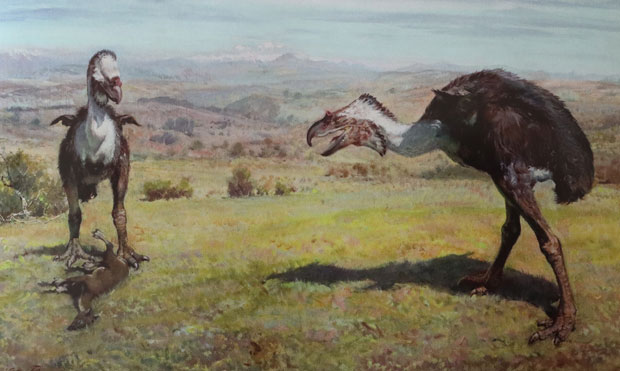One of the most enigmatic members of the Aves is the Phorusrhacos “terror bird”. Phorusrhacos (P. longissimus) was scientifically described in 1887 by the Argentinian palaeontologist Florentino Ameghino. The genus name is pronounced four-rus-rak-cus.
Recently, Everything Dinosaur published an article summarising the results of the latest phase in the Bird 10,000 Genomes (B10K) project. This programme involves the most extensive and ambitious research into the genetics of the Aves. Phase two of the study revealed some fascinating insights into the phylogeny of our feathered friends. For example, it was confirmed that owls are a sister lineage to the Accipitriformes. Accipitriformes consist of most of the diurnal birds of prey. Birds such as hawks, eagles, kites and buzzards.
Intriguingly, falcons although similar to other birds of prey, are not Accipitriformes. Falcons are not closely related to other birds of prey. They are grouped into a clade that also contains the songbirds, parrots and the enigmatic Cariamiformes. The clade is known as the Australaves. Giant, predatory flightless birds such as the Phorusrhacos “terror bird” are members of the Cariamiformes order.
This means that falcons are related to “Terror Birds”…
Picture credit: Everything Dinosaur
To read Everything Dinosaur’s article about the latest findings from the Bird 10,000 Genomes (B10K) Consortium: New Analysis Re-Writes Bird Evolution.
The Phorusrhacos “Terror Bird”
The holotype material (MLP 20-122) consists of an incomplete mandible. Ameghino mistakenly believed that these fossils represented a toothless mammal. The avian nature of Phorusrhacos was first proposed in 1891, based on a comparison with fossil remains of a related species Patagornis marshi which had just been described (Moreno and Mercerat). These enigmatic creatures, with their huge skulls and powerful beaks have inspired numerous artists. Both Charles R. Knight and Zdeněk Burian produced illustrations of Phorusrhacos.
Picture credit: Zdeněk Burian
The phorusrhacids were the dominant terrestrial predators on the isolated continent of South America for millions of years. Some phorusrhacids dispersed into Central America and the southern United States during the Great American Biotic Interchange when North America became united with South America in the Pliocene.
Mike from Everything Dinosaur commented:
“These large, cursorial hunters were the apex predators in many Cenozoic ecosystems. There is nothing like them alive today. The only extant members of the Cariamiformes are the two species of Seriema, both of which are native to South America just like the giant Phorusrhacos longissimus. It is perhaps because there is nothing like these creatures living today that Phorusrhacos evokes a fierce majesty of a lost world.”
The “terror birds” were the last apex theropod dinosaur predators. With their passing, most of the top predatory niches in terrestrial food webs were the domain of the Mammalia.
The Everything Dinosaur website: Prehistoric Animal Models and Figures.




Leave A Comment